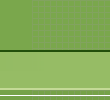|
CANNABIS
SHELF GROWING
Shelf gardening
with fluorescents may be the trend of the future, since the
materials are so inexpensive, and easy to obtain. Fluorescent
lamps are great for shelf gardening. In this system, many
shelves can be placed, one above the other, and fluorescent
lamps are used on each shelf. Some shelves have 24 hour
lighting, some have 12 hour lighting (for flowering). Two areas
are best, perhaps with one other devoted to cloning and
germination of seed.
Shelf gardening
assumes your going to keep all plants 3 or shorter at maturity,
so all shelves are 3-4 feet apart. Less light is necessary when
you have plants that are this short and forced to mature early.
One drawback to a
shelf garden like this is that it is very time consuming to
adjust the lamp height every day, and it is harder to take a
vacation for even a week with no tending of the garden. This
applies mostly to the vegetative stage, when plants are growing
as much as an inch per day. Lamps on the flowering shelves are
not adjusted nearly as often.
Normally, the
lamps should be kept within 2 inches of the tops of the plants,
with the plants arranged such that they get progressively taller
as the end of the lamps go up, so that all plants are within
this 2" range. This is an ideal however, and if you do go on
vacation, adjust the lamps so that your sure the plants will not
be able to grow up to the lamps within that length of time. If
enough flourecents are used to completely saturate the shelf
with light, the spacing issue will not create spindly plants.
They will mearly grow a little slower if the lamps are not very
close to them.
An alternative is
to use fluorescent lamps for cloning, germination and early
seedling growth on the top shelf of a closet, then switch over
to HPS for heavy vegatative growth and/or flowering in the main
closet area.
Position the HPS
such that it do not need adjustment, at the top most possible
point in the closet or room. Most HPS installations will not
require lamp height adjustment. Just attach the lamp to the
underside of shelf or ceiling as high as possible, and if you
want to get a few plants closer to it, put them on a temporary
shelf, box or table to get them closer to the lamp.
A shelf is all
that is necessary with this type of setup, preferably at least
18" wide, up to about 24" maximum. This area must be painted a
very bright white, or covered with aluminum foil, dull side out
to reflect light back to the plants. (Dull side out prevents
hot-spots; diffuses light better.) Paint the shelf white too.
Or, use aluminized mylar, a space blanket, or any silvery
surface material. Do not use mirrors, as the glass soaks up
light.
Hang shop lamps
from chains and make sure you can adjust them with hooks or some
other type of mechanism so they can be kept as close to the
plants as possible at all times (1-2"). If the lamps are too far
from the plants, the plants could grow long, spindly stems
trying to reach the lamp, and will not produce as much bud at
maturity. This is due to internode length being much longer.
This is the length of stem between each set of leaves. If it is
shorter, there can be more internodes, thus more branches, thus
a plant that provides more buds in less space at harvest time.
Shelf gardening is
sometimes referred to as Sea of Green, because many plants are
grown close together, creating a green canopy of tops that are
grown and matured quickly, and the next crop is started and
growing concurrently in a separate area of continuous light.
Clones are raised in a constant light shelf, until they start to
grow well vegetatively, then placed on a 12 hour per day shelf
to flower
|









